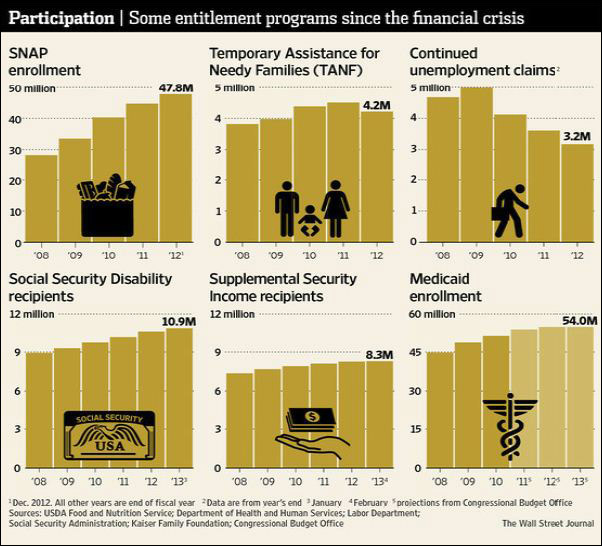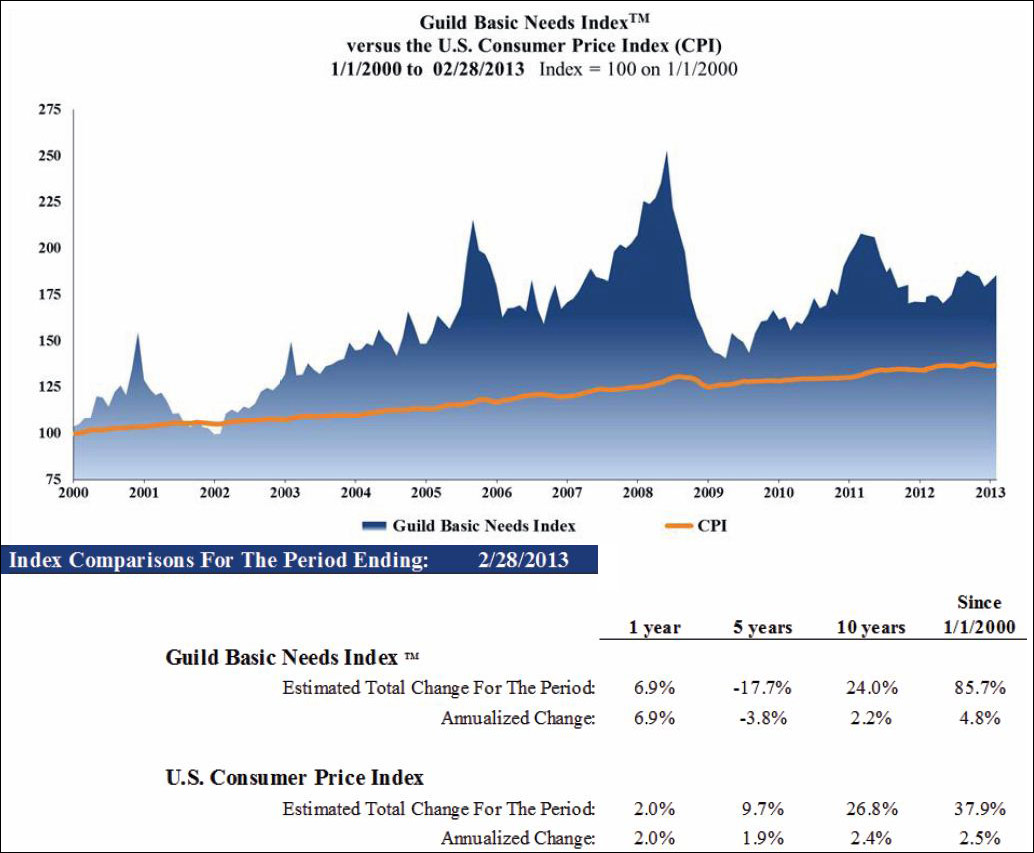In our biweekly installment about the rising cost of basic, essential needs, we often discuss how the standard of living in America is eroding -- hurt by stagnant incomes and the rising costs of necessities. One effect of this is that more and more Americans are relying on Federal government assistance to help them feed their families. An article in last Thursday’s (3/28) Wall Street Journal by Damian Paletta and Caroline Porter discusses that even though the economy has improved after the 2008 to 2010 recession, enrollment in the Supplemental Nutrition Assistance Program (SNAP), which is the modern-day food-stamp program, has stayed high. In 2008 food-stamp recipients numbered about 28.2 million. While unemployment has fallen from a peak of 10 percent in October 2009 to 7.7 percent today, SNAP participants grow. Today, enrollment stands at about 47.8 million Americans, costing the government about 74.6 billion dollars in 2012.
Another Cause -- Government’s Generosity Expanded
Since 1996, when the Clinton Administration and Congress set in motion the overhaul of the welfare system -- a process that continues under the current Administration -- more Americans have become eligible. At Washington’s behest, many states are opting to relax the requirements. Now, people with good income and savings can qualify… and so more are using it.
Typically as economy improves, government programs don’t have to help as many people… Yet the graphs below show that some programs keep growing...
As Food Prices Climb, the Numbers of People Using Government Assistance to Eat Will Stay High
The Guild Basic Needs Index™ (GBNI) tracks the rising costs of certain food, clothing, shelter, and energy components that people must consume every day. Food components represent 30 percent of the Guild Basic Needs Index (the other components and weights are Clothing 10 percent, Shelter 30 percent, and Energy used for heating, cooking, and transportation 30 percent). In developed countries, the average person spends 10 to 15 percent of their income on food items. In the U.S. the percentage is at the low end of that range, but we believe the percentage is going to grow. The food components that we measure in our GBNI have risen an average of about 108 percent since January 1, 2000.
Unless wages start keeping pace, or unless unemployment falls a lot more, the government’s SNAP is looking like a permanently growing budget item. In the grand scheme of things, SNAP billion may not be a huge budget item, but the trend is in place for it to get out of hand. A lethargic economy, rising food prices, and the government’s increased generosity are all driving its growth.
To track the effects of rising prices of basic, essential needs, and our discussion of how it affects American policy and society, visit gbni.info.
To Learn How to Receive the Full Premium Commentary, Please Click the Following Link: Gold Subscription








